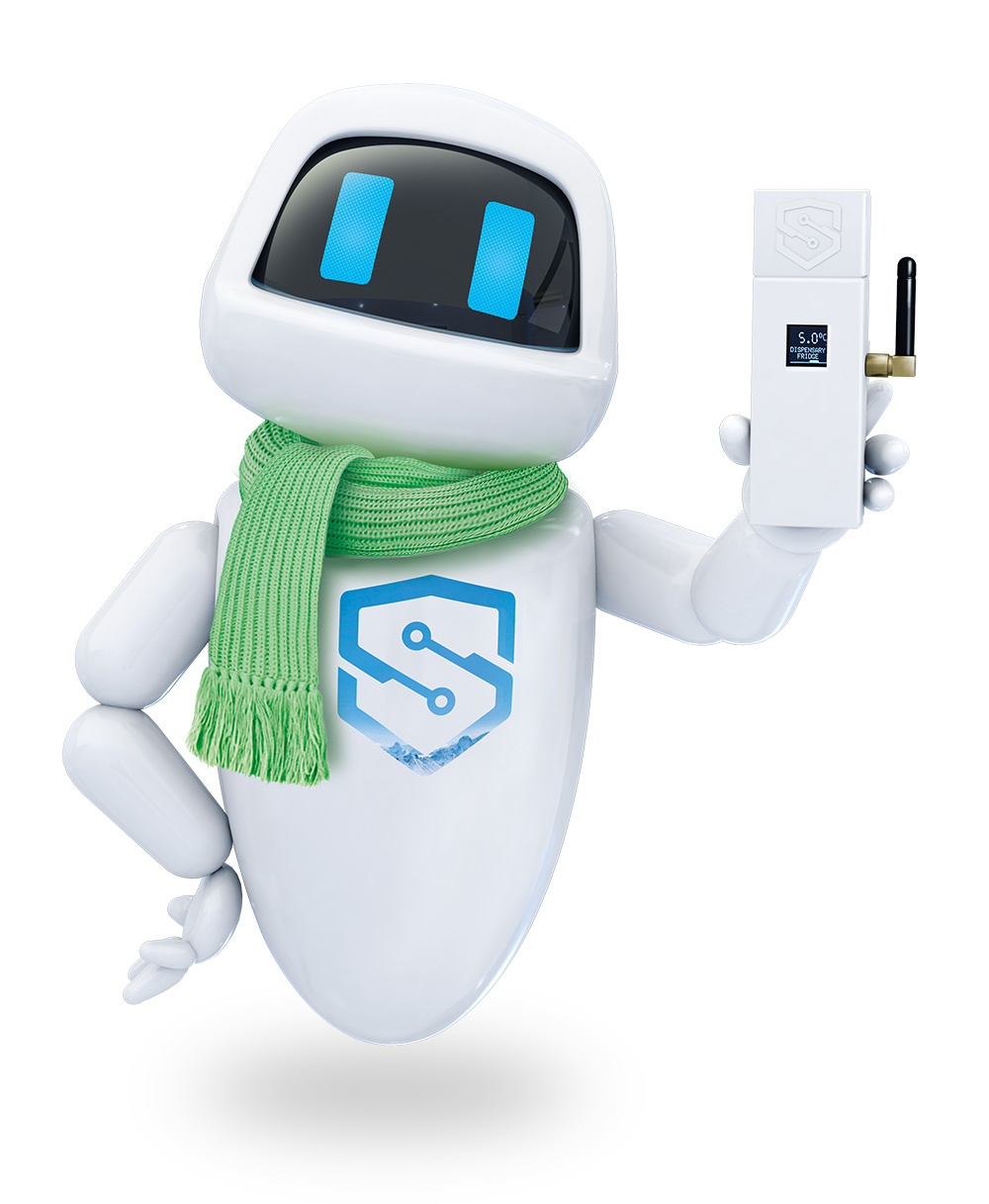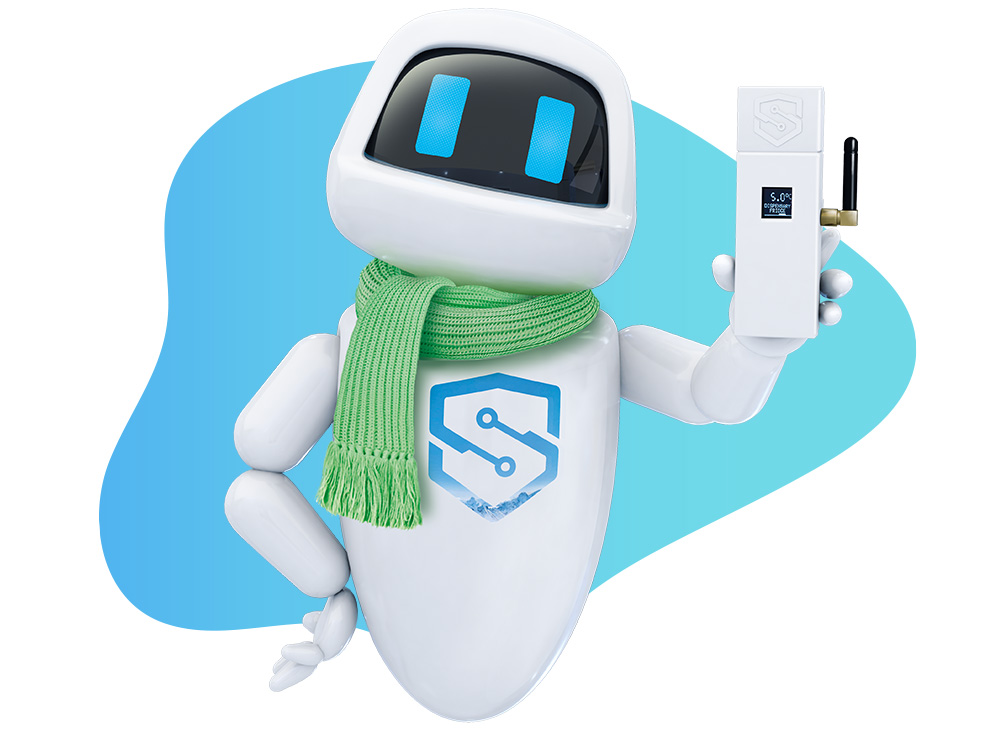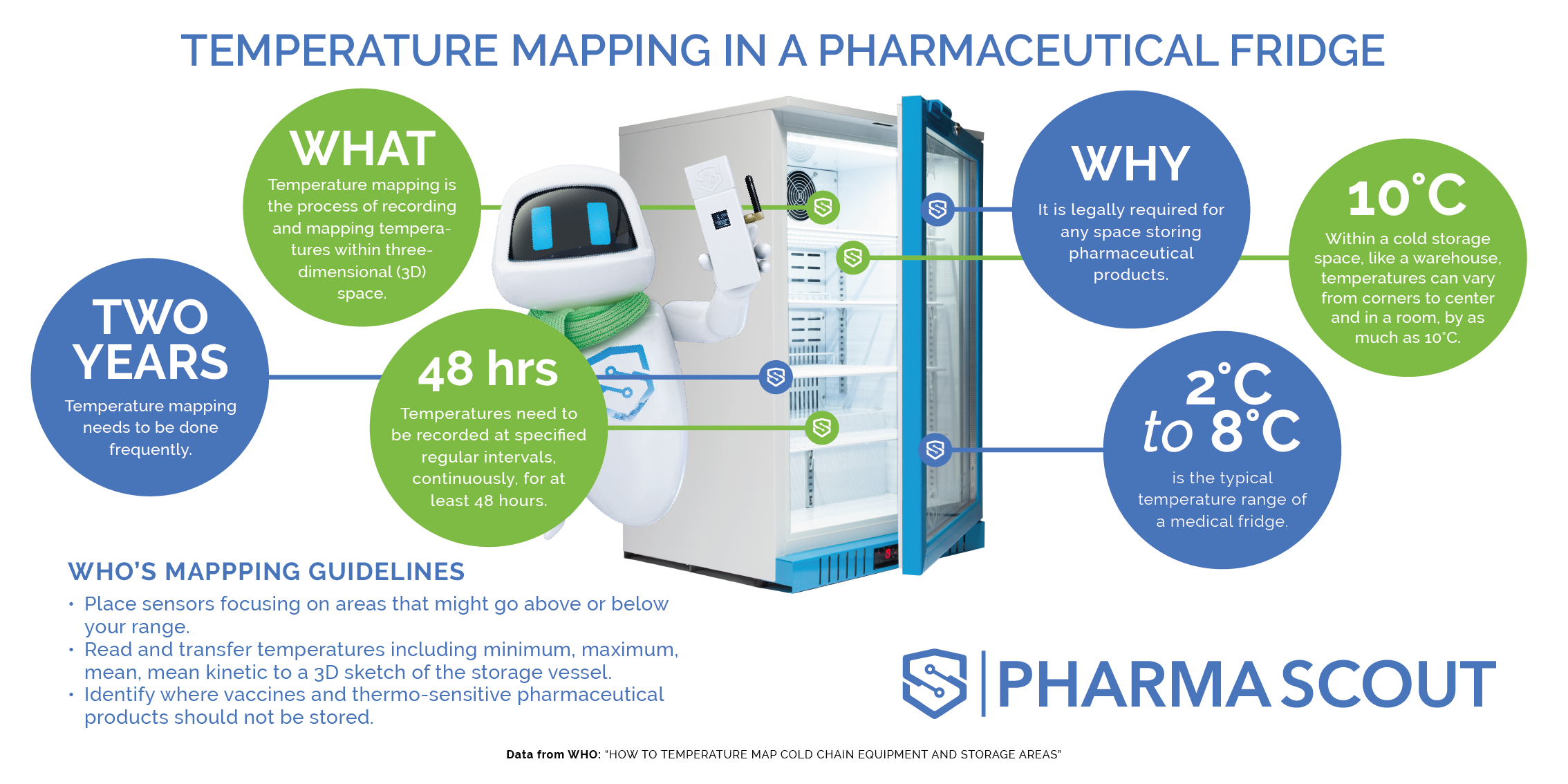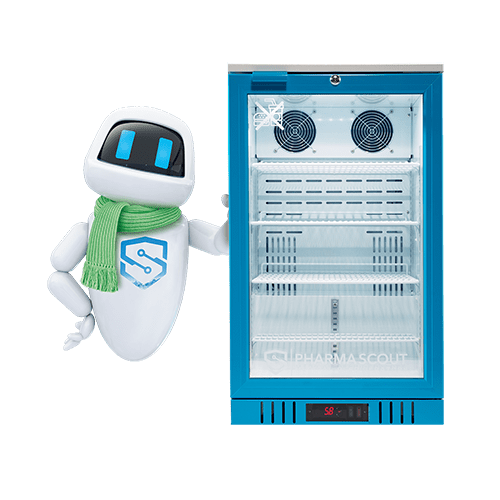Did you know that some spaces can have up to a 10°C difference in temperature? Temperature mapping is critical maintenance if you’re storing medicines and vaccines.
Anyone who deals in keeping medications compliant knows that not all cold spaces are created equal.
A cooler bag, a domestic fridge, a pharmaceutical fridge and an ultra-low freezer, for example, are four very different spaces and not all are well-designed for medicines. Because medications need consistent temperatures to keep them safe and prevent them from degrading, it’s crucial that after their long journey through the cold chain they’re stored correctly and according to global recommendations.

And that means you can’t just plonk them down anywhere! The space you’ve allocated for your medications needs to be frequently calibrated and temperature mapped to ensure the temperature is within the specified range. The temperature can – and does – vary from corner to centre to the door to the cooling fan.
As the World Health Organisation (WHO) explains, “The WHO effective vaccine management (EVM) initiative sets standards for safe vaccine handling and storage to ensure that heat and freezing temperatures do not damage vaccines. The standards require all vaccine cold and freezer rooms to be temperature mapped routinely every 2 years.”
We explain the importance of temperature mapping in the infographic below and some useful ‘how to’ information.
Temperature mapping is, as you can, both important and complex. The next step, after your mapping is complete, is to determine whether your fridge, freezer or other cold space is meeting requirements.
WHO gives three different ratings you can use:
- Fully suitable. Can items be stored safely throughout the area or in the equipment?
- Partially suitable. Are some areas inside the equipment or storage area not suitable for storing the items?
- Not at all suitable. Is the equipment or storage area mapped not at all suitable for storing the items?
Temperature mapping also needs to be done after a major repair or refurbishment.
This is a critical piece of maintenance for any storage space used for medications, whether for human or animal. If you’re not sure how to get a handle on temperature mapping, PharmaScout is always available for a professional consultation.






